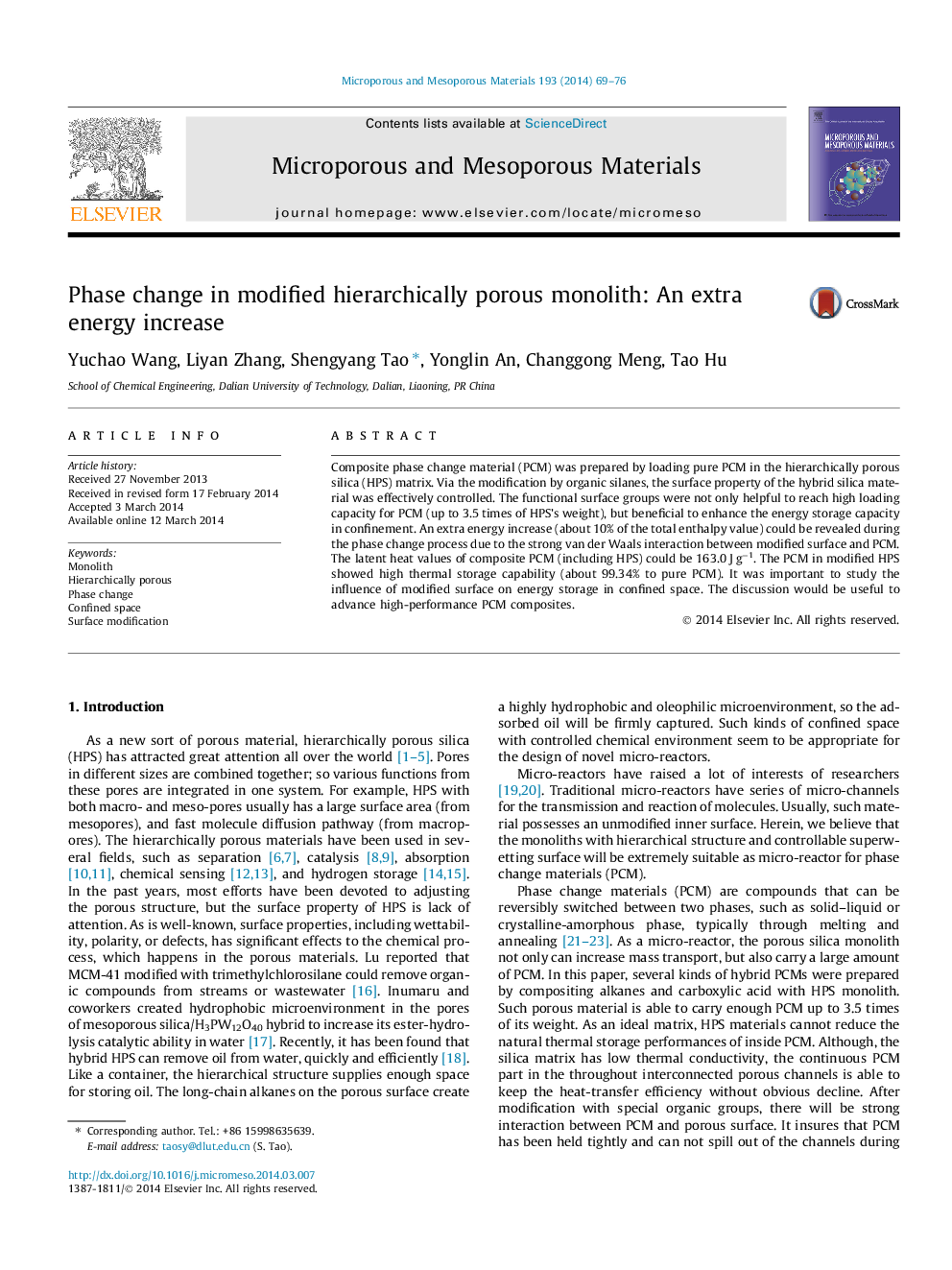| Article ID | Journal | Published Year | Pages | File Type |
|---|---|---|---|---|
| 73041 | Microporous and Mesoporous Materials | 2014 | 8 Pages |
•Hybrid PCM monoliths were prepared by compositing PCM with hierarchically porous silica (HPS).•Functional groups could be anchored on the hybrid HPS by surface modification.•There was an extra heat storage increase due to the confined space and modified surface.•The thermal storage capability of PCM in HPS was outstandingly high and reached up to 99.34% to pure PCM.
Composite phase change material (PCM) was prepared by loading pure PCM in the hierarchically porous silica (HPS) matrix. Via the modification by organic silanes, the surface property of the hybrid silica material was effectively controlled. The functional surface groups were not only helpful to reach high loading capacity for PCM (up to 3.5 times of HPS’s weight), but beneficial to enhance the energy storage capacity in confinement. An extra energy increase (about 10% of the total enthalpy value) could be revealed during the phase change process due to the strong van der Waals interaction between modified surface and PCM. The latent heat values of composite PCM (including HPS) could be 163.0 J g−1. The PCM in modified HPS showed high thermal storage capability (about 99.34% to pure PCM). It was important to study the influence of modified surface on energy storage in confined space. The discussion would be useful to advance high-performance PCM composites.
Graphical abstractFigure optionsDownload full-size imageDownload as PowerPoint slide
